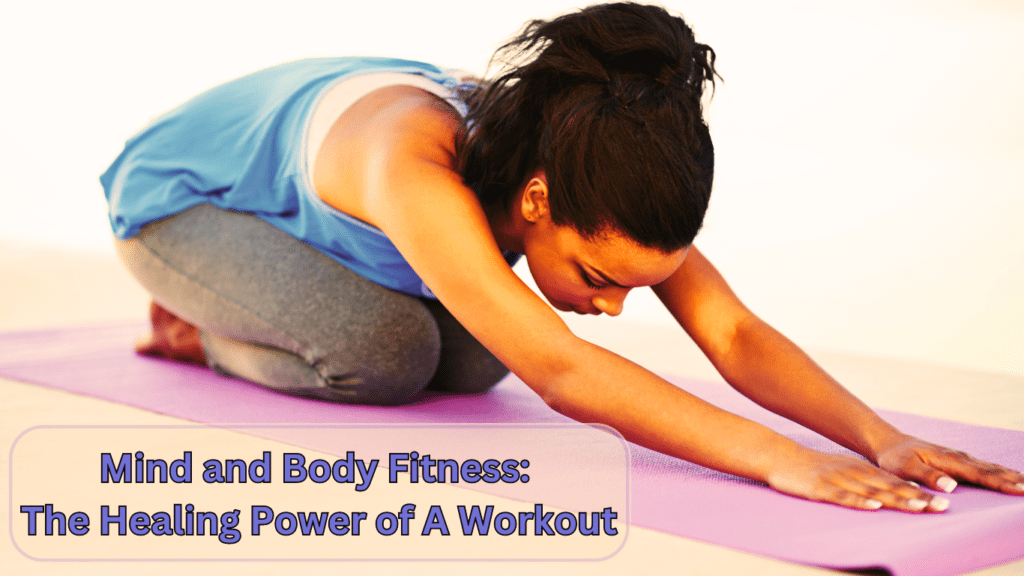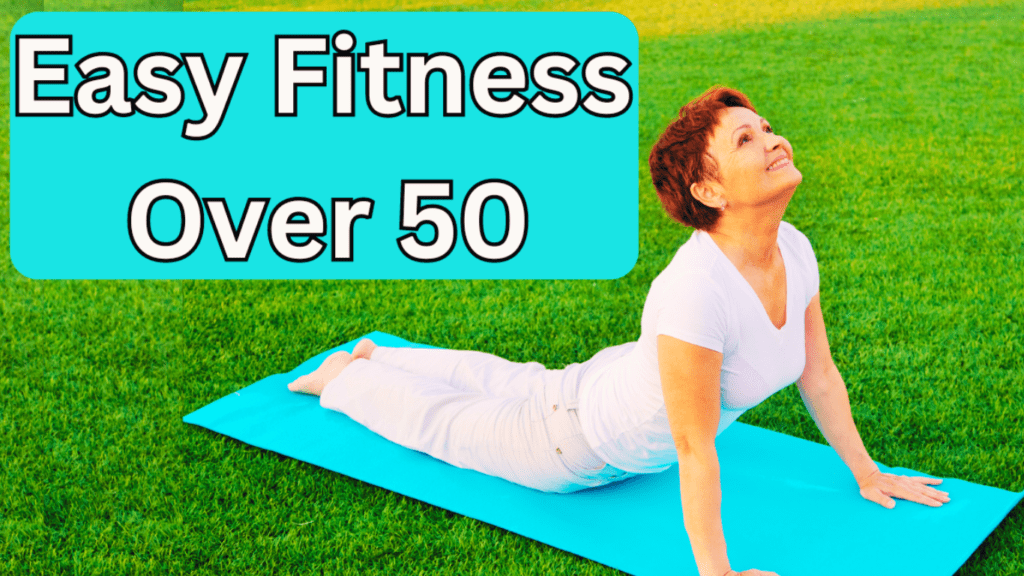Maximize Your Fitness with the Benefits of Foam Rolling for Weight Loss
In this article, you will explore the incredible benefits of foam rolling for weight loss, empowering you to enhance your fitness journey with effective techniques and practical insights.
Ever wondered if there’s a secret weapon to boost your weight loss journey? It’s time to roll out the foam roller! Foam rolling, once a tool exclusive to athletes and physical therapists, is now recognized for its myriad of benefits, including enhancing your weight loss efforts. This simple piece of equipment can be a game-changer for anyone looking to improve their fitness regimen. Foam rolling works by applying pressure to specific muscles and connective tissues, which can help in breaking up scar tissue and muscle knots, improving blood flow, and aiding in muscle recovery. These effects are essential not only for athletes but also for anyone aiming to achieve better overall health and fitness.
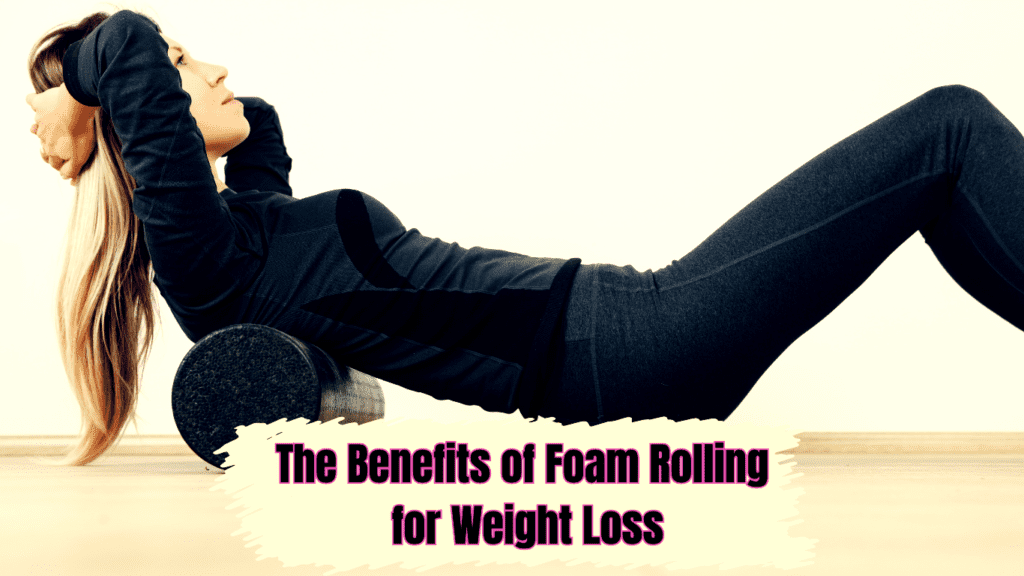
One of the key benefits of foam rolling for weight loss is its ability to enhance muscle recovery. After a vigorous workout, your muscles need time to repair and grow stronger. By using a foam roller, you can speed up this recovery process. The improved blood circulation from foam rolling helps deliver essential nutrients and oxygen to your muscles more efficiently, reducing soreness and fatigue. This means you can get back to your workouts faster and more effectively, maintaining a consistent exercise routine that is crucial for weight loss.
Another important aspect to consider is the role of foam rolling in improving flexibility and range of motion. When you incorporate foam rolling into your daily routine, you’re essentially giving your muscles a deep tissue massage. This can help release tightness and tension, allowing for better movement during exercise. Improved flexibility means you can perform exercises with better form and greater ease, leading to more effective workouts and reduced risk of injury. This is particularly beneficial for those who are new to fitness or are working on enhancing their current fitness levels.
Stress reduction is another often overlooked benefit of foam rolling for weight loss. The process of foam rolling can be incredibly relaxing, similar to the effects of a massage. It helps in releasing tension not just in the muscles but also in the mind. Lower stress levels are linked to better weight management since high stress can lead to overeating and unhealthy food choices. By incorporating foam rolling into your routine, you’re not just working on your physical fitness but also promoting mental well-being, which is a critical component of a successful weight loss journey.
Moreover, foam rolling can help in breaking up fascia, the connective tissue that surrounds muscles and organs. When fascia becomes tight or restricted, it can limit movement and cause discomfort. By regularly using a foam roller, you can keep this tissue flexible and healthy. This not only improves your overall mobility but also ensures that your muscles can work more effectively. Enhanced muscle efficiency means you burn more calories during your workouts, contributing to your weight loss goals.
Subscribe And Get Our Free E-Book:Unlocking The Power Of Nutrition-Supplements, Substitutes, and Superfoods!
In addition to these benefits, foam rolling can aid in the reduction of cellulite. While it’s not a magic cure, consistent foam rolling can help smooth out the appearance of cellulite by breaking up the fibrous bands of tissue that cause the dimpled effect. Improved blood flow and lymphatic drainage from foam rolling also contribute to healthier, more resilient skin.
In summary, the benefits of foam rolling for weight loss are multifaceted. It aids in muscle recovery, improves flexibility, reduces stress, enhances muscle efficiency, and can even help reduce cellulite. Incorporating foam rolling into your fitness routine can provide a holistic approach to health and well-being. Whether you’re just starting your weight loss journey or looking to enhance your current regimen, foam rolling is a simple yet effective tool that can make a significant difference. Remember, consistency is key. Make foam rolling a regular part of your routine, and you’ll soon start to see and feel the benefits in your body and overall fitness.
What is Foam Rolling?
Foam rolling, also known as self-myofascial release, is a technique that involves using a cylindrical piece of foam to apply pressure to various parts of the body, primarily the muscles and connective tissues. This practice helps to release tension, increase blood flow, and improve overall mobility and flexibility. Essentially, foam rolling mimics the effects of a deep tissue massage, allowing individuals to target specific areas of discomfort or tightness on their own. Foam rolling is a valuable addition to any fitness regimen, offering a range of benefits, particularly in enhancing recovery and performance.
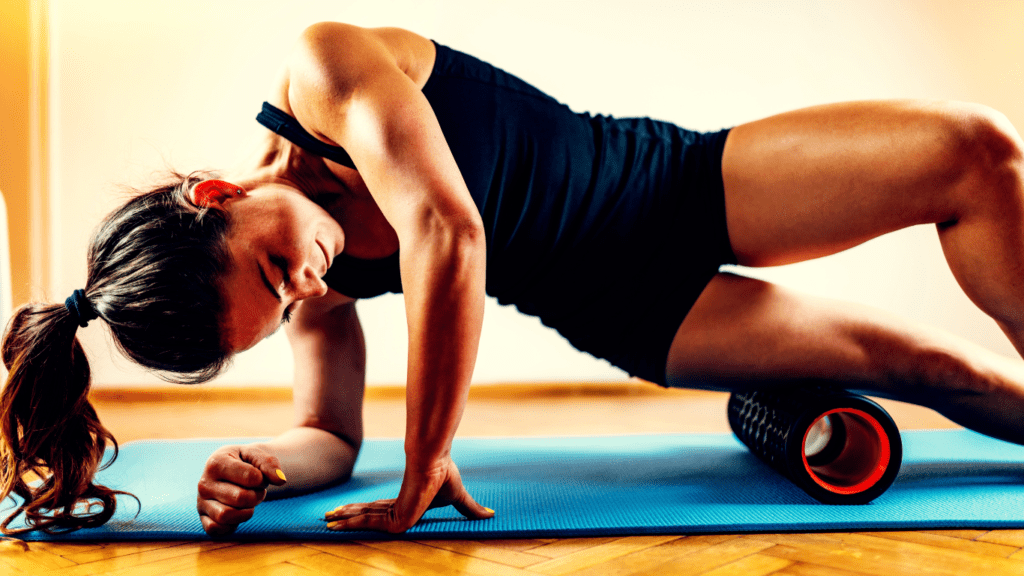
The history of foam rolling is relatively recent, emerging in the late 20th century. Initially, it was primarily used by physical therapists and elite athletes to aid in muscle recovery and injury prevention. Over time, as the benefits of foam rolling for weight loss and general fitness became more widely recognized, its popularity expanded to a broader audience. Today, foam rolling is a common practice among fitness enthusiasts of all levels, from beginners to seasoned athletes, and is often incorporated into warm-up and cool-down routines.
There are various types of foam rollers available, each designed to serve different purposes and cater to individual preferences. Smooth foam rollers are the most basic and are excellent for beginners. They provide an even surface that is gentle on the muscles, making them ideal for those new to foam rolling or with particularly sensitive areas. These rollers are effective for overall muscle relaxation and improving circulation.
Textured foam rollers, on the other hand, come with ridges or knobs that are designed to dig deeper into the muscles. They can be more intense and are typically used by individuals who are more experienced with foam rolling or who need to target specific muscle knots or areas of tension. The texture allows for a more targeted massage, breaking up scar tissue and adhesions more effectively than smooth rollers.
Vibrating foam rollers are a more advanced option that combines the benefits of foam rolling with vibration therapy. The vibration helps to further relax the muscles, enhance blood flow, and increase the effectiveness of the rolling. These rollers can be particularly beneficial for those dealing with chronic pain or stiffness, as the vibration adds an extra layer of muscle relaxation.
Using the appropriate type of foam roller can significantly enhance the benefits of foam rolling for weight loss. For example, a smooth foam roller might be best for a gentle warm-up or cool-down, while a textured or vibrating roller could be more effective for deep tissue massage and muscle recovery after an intense workout. The key is to choose a roller that matches your needs and comfort level, ensuring that you can incorporate foam rolling into your routine consistently.
Foam rolling works by applying pressure to the fascia, the connective tissue that surrounds and supports the muscles and organs. When the fascia becomes tight or restricted, it can lead to discomfort, reduced mobility, and a higher risk of injury. By rolling over the affected areas, you can help to release these restrictions, improve flexibility, and promote better overall movement. This is particularly important for weight loss, as improved mobility allows for more effective exercise, which in turn can help to burn more calories and build muscle more efficiently.
Another crucial aspect of foam rolling is its ability to aid in muscle recovery. After a strenuous workout, muscles can become sore and tight, leading to a delay in your next exercise session. Foam rolling helps to alleviate this soreness by increasing blood flow to the muscles, delivering the nutrients and oxygen needed for repair and recovery. This means you can get back to your workouts sooner and maintain a consistent exercise routine, which is essential for achieving weight loss goals.
What Exactly Is Foam Rolling And Why Should I Roll Video
In addition to the physical benefits of foam rolling for weight loss, there are also mental benefits. The process of foam rolling can be quite relaxing, providing a moment of mindfulness and stress relief. Lower stress levels are associated with better weight management, as high stress can often lead to overeating or poor food choices. By incorporating foam rolling into your routine, you can promote not only physical health but also mental well-being, creating a more holistic approach to fitness and weight loss.
Overall, understanding what foam rolling is and how it can benefit you is key to integrating it into your fitness routine effectively. Whether you choose a smooth, textured, or vibrating foam roller, the important thing is to use it regularly and correctly. By doing so, you’ll be able to experience the full range of benefits of foam rolling for weight loss, from improved muscle recovery and flexibility to enhanced mental well-being. So, next time you’re gearing up for a workout or winding down after one, don’t forget to reach for your foam roller and enjoy the many advantages it has to offer.
How Foam Rolling Works
Foam rolling works by applying pressure to the muscles and fascia, the connective tissue that surrounds muscles and other internal structures. This pressure helps to break up adhesions and scar tissue that can form within the fascia, leading to improved flexibility and reduced muscle stiffness. When you roll over a specific area, you essentially give yourself a deep tissue massage, targeting knots and tight spots that may have developed from repetitive motion, poor posture, or intense physical activity. This self-myofascial release can significantly enhance your overall physical performance and well-being.
One of the primary physiological mechanisms behind the benefits of foam rolling for weight loss is its impact on blood flow. By applying pressure to the muscles, foam rolling helps to increase circulation, bringing more oxygen and nutrients to the muscle tissues. This improved blood flow can accelerate muscle recovery and reduce soreness after workouts. Enhanced recovery times mean you can maintain a more consistent and effective exercise routine, which is crucial for weight loss. Furthermore, better circulation helps in the removal of metabolic waste products from the muscles, reducing inflammation and promoting faster healing.
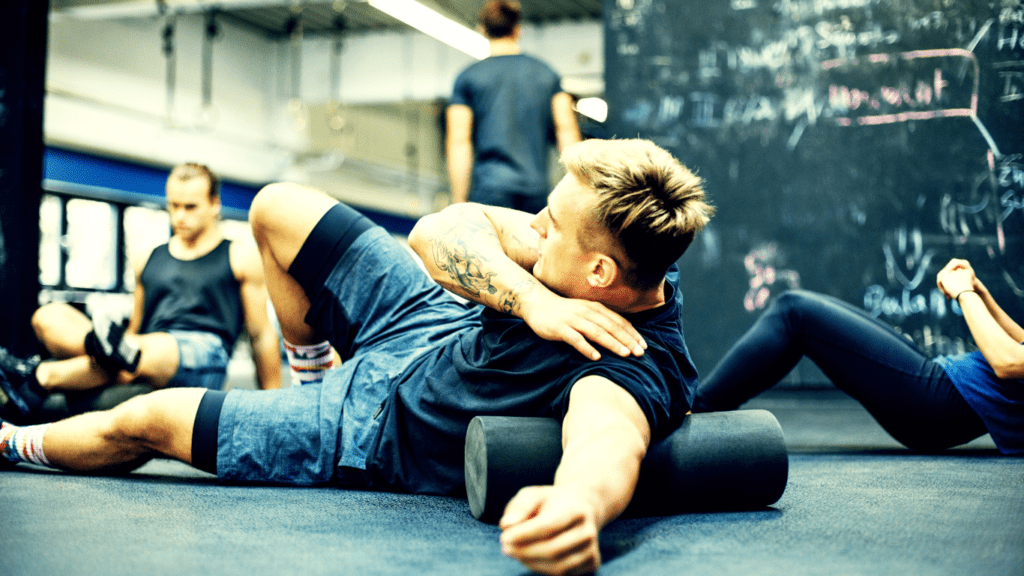
Foam rolling also affects the nervous system by stimulating the sensory receptors located in the fascia and muscles. This stimulation can lead to a temporary increase in pain threshold and a decrease in muscle tension. When you roll out tight areas, the pressure applied can trigger a relaxation response in the muscles, reducing overall muscle tightness and improving range of motion. This increased flexibility allows for more effective and safer exercise, enabling you to perform a wider variety of movements and engage in more intense physical activity, both of which are important for burning calories and losing weight.
Scientific research supports the benefits of foam rolling for weight loss and overall physical health. For instance, a study published in the Journal of Strength and Conditioning Research found that foam rolling after exercise significantly reduced muscle soreness and improved muscle performance in subsequent workouts. The participants who used foam rollers reported less muscle pain and were able to maintain a higher level of physical activity, highlighting the importance of foam rolling in a consistent fitness routine.
Another study published in the International Journal of Sports Physical Therapy examined the effects of foam rolling on flexibility and performance. The researchers found that foam rolling significantly increased the range of motion in the hip joint, which is critical for many forms of exercise, including running, cycling, and weightlifting. Improved flexibility can lead to better exercise technique and efficiency, ultimately contributing to more effective workouts and greater calorie burn.
Expert opinions also reinforce the physiological benefits of foam rolling. Many physical therapists and fitness professionals recommend foam rolling as a way to prevent injuries and improve recovery times. According to Dr. Mike Clark, CEO of the National Academy of Sports Medicine, foam rolling is an essential component of a comprehensive fitness program. He explains that by addressing muscle imbalances and improving tissue quality, foam rolling can help individuals achieve better movement patterns and enhance overall physical performance.
In addition to its effects on the muscles and fascia, foam rolling can also have a positive impact on the lymphatic system. The lymphatic system is responsible for removing toxins and waste products from the body. By stimulating the muscles and fascia, foam rolling can help to promote lymphatic drainage, reducing swelling and inflammation. This detoxifying effect can enhance overall health and contribute to weight loss by improving the body’s ability to metabolize and eliminate waste.
The cumulative effects of these physiological mechanisms make foam rolling a powerful tool for anyone looking to lose weight and improve their fitness. By incorporating foam rolling into your routine, you can enhance muscle recovery, increase flexibility, reduce muscle tension, and promote better circulation and lymphatic drainage. These benefits can lead to more effective workouts, faster recovery times, and a more sustainable fitness regimen, all of which are crucial for achieving and maintaining weight loss.
Moreover, the mental benefits of foam rolling should not be overlooked. The act of foam rolling can be quite meditative, providing a moment of relaxation and mindfulness. Reducing stress levels through foam rolling can help prevent stress-related eating and improve overall mental well-being. When you feel less stressed and more relaxed, you are more likely to make healthier choices and stick to your weight loss goals.
In conclusion, understanding how foam rolling works at a physiological level highlights its importance in a fitness and weight loss regimen. The benefits of foam rolling for weight loss are supported by scientific research and expert opinions, emphasizing its role in muscle recovery, flexibility, and overall physical and mental health. By making foam rolling a regular part of your routine, you can enhance your workouts, recover more quickly, and achieve your weight loss goals more effectively. So, grab your foam roller and start experiencing these benefits for yourself.
How the Benefits of Foam Rolling for Weight Loss Enhance Recovery, Flexibility, and Stress Reduction
Foam rolling can be a game changer when it comes to weight loss, primarily due to its ability to improve recovery and performance, increase flexibility and mobility, reduce muscle soreness, and help with stress reduction. By understanding how these factors contribute to weight loss, you can fully appreciate the benefits of foam rolling for weight loss and incorporate it effectively into your fitness routine.
Improved Recovery and Performance: One of the main challenges in maintaining a consistent workout routine is dealing with muscle fatigue and soreness. When you engage in intense physical activity, your muscles undergo stress and micro-tears, which require time to heal and recover. Foam rolling speeds up this recovery process by enhancing blood circulation to the muscles. This increased blood flow delivers more oxygen and nutrients, essential for muscle repair, and helps to remove metabolic waste products that can cause fatigue. Faster recovery means you can return to your workouts more quickly and consistently, without long downtime due to muscle soreness. This consistency is crucial for weight loss, as regular exercise is key to burning calories and improving metabolism.
Increased Flexibility and Mobility: Flexibility and mobility are critical components of effective exercise. When your muscles and joints are flexible, you can perform a wider range of movements with proper form, reducing the risk of injury and increasing the efficiency of your workouts. Foam rolling helps to release tension in the fascia, the connective tissue surrounding the muscles, which can become tight and restrictive. By rolling out these tight areas, you enhance your overall flexibility and mobility, allowing for more dynamic and varied exercises. Improved flexibility can also help you engage in more vigorous physical activities, leading to higher calorie burn and more significant weight loss results.
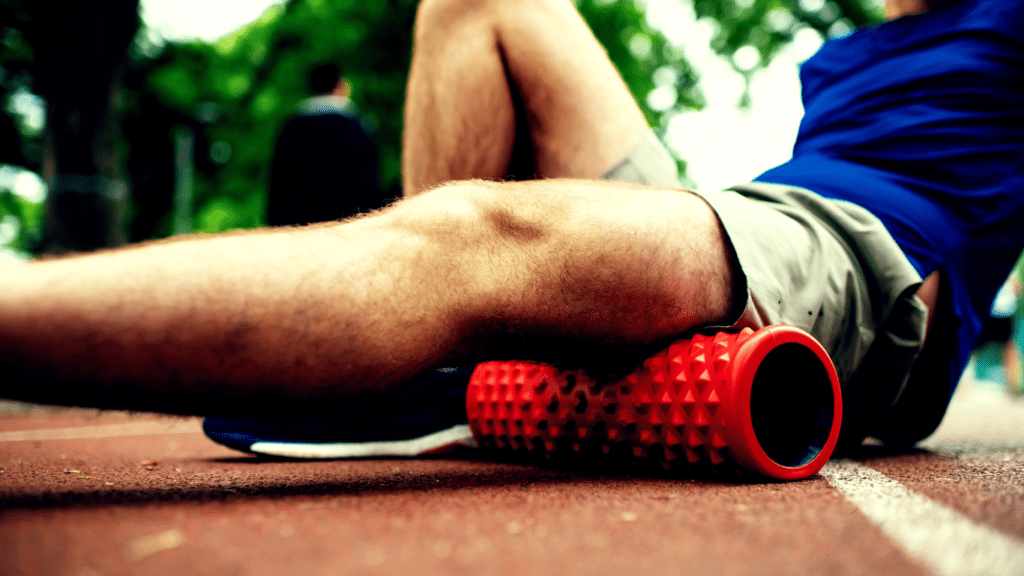
Reduced Muscle Soreness: One of the benefits of foam rolling for weight loss is its ability to reduce muscle soreness. After a strenuous workout, it’s common to experience delayed onset muscle soreness (DOMS), which can make it challenging to stay motivated and continue with regular exercise. Foam rolling helps to alleviate this soreness by breaking down muscle knots and improving circulation, which reduces inflammation and speeds up the healing process. When muscle soreness is minimized, you’re more likely to stick to your workout schedule and maintain a higher level of physical activity, both of which are essential for weight loss.
Stress Reduction: Stress is a significant factor that can hinder weight loss efforts. High levels of stress can lead to emotional eating, poor food choices, and a decrease in physical activity. Foam rolling can play a crucial role in stress reduction by promoting relaxation and reducing muscle tension. The act of foam rolling stimulates the sensory receptors in the muscles, which can trigger a relaxation response in the body. This can help to lower cortisol levels, the hormone associated with stress, and promote a sense of calm and well-being. Incorporating foam rolling into your routine can provide a moment of mindfulness and self-care, helping to reduce overall stress levels and support your weight loss goals.
Understanding how these aspects work together to enhance your fitness routine can help you see the full scope of the benefits of foam rolling for weight loss. When you can recover quickly from workouts, you maintain a consistent exercise schedule, which is vital for burning calories and building muscle. Enhanced flexibility and mobility allow you to perform a wider variety of exercises more effectively, leading to better overall fitness and higher energy expenditure. Reduced muscle soreness keeps you motivated and lessens the likelihood of skipping workouts due to discomfort. And by lowering stress levels, you can prevent stress-related weight gain and promote a healthier lifestyle overall.
Foam rolling is not just for athletes or those recovering from injuries. It is a valuable tool for anyone looking to improve their fitness and achieve weight loss. The key is to incorporate it regularly into your routine, whether before workouts as part of a warm-up, after workouts for recovery, or even on rest days to help maintain muscle health and flexibility. Consistency is crucial in reaping the benefits, so make foam rolling a regular part of your fitness regimen.
The benefits of foam rolling for weight loss are multi-faceted and supported by both scientific research and practical experience. By improving muscle recovery and performance, increasing flexibility and mobility, reducing muscle soreness, and helping with stress reduction, foam rolling can significantly enhance your ability to lose weight and improve overall fitness. Embrace the practice of foam rolling, and you’ll likely find it to be a valuable addition to your health and wellness routine, supporting your journey to achieving and maintaining your weight loss goals.
Chart: Key Benefits of Foam Rolling for Weight Loss
| Benefit | Essence | Impact on Weight Loss | Extra Insight |
|---|---|---|---|
| Muscle Recovery | Boosts blood flow, speeds up muscle repair. | Faster recovery allows more consistent workouts, aiding weight loss. | Helps you return to exercise quicker and more often. |
| Flexibility | Releases muscle tension, increases range of motion. | Better flexibility enhances workout effectiveness and reduces injury risk. | Improves movement efficiency, aiding calorie burn. |
| Stress Reduction | Reduces muscle tension, promotes relaxation. | Lower stress helps prevent emotional eating and supports healthier choices. | Regular use can improve overall stress management. |
| Blood Flow | Enhances circulation, aids nutrient delivery and waste removal. | Better circulation speeds up recovery and reduces soreness, supporting exercise consistency. | Supports overall metabolic health. |
| Cellulite Reduction | Breaks up fibrous tissue, improves skin appearance. | Can smooth out cellulite, boosting confidence. | Complements overall fitness efforts for healthier skin. |
| Lymphatic Drainage | Promotes detoxification by aiding waste removal from the body. | Reduces inflammation and supports overall health, aiding weight management. | Enhances overall bodily function. |
Quick Tips:
- Consistency: Roll 3-4 times a week for best results.
- Technique: Roll slowly and avoid joints.
- Post-Workout: Helps reduce soreness and speed up recovery.
- Pre-Workout: Prepares muscles, increases flexibility.
- Combine: Use with stretching and strength training.
Practical Tips
Foam rolling is a valuable tool for enhancing weight loss, offering benefits such as improved recovery, flexibility, and stress reduction. To maximize these benefits, it’s essential to understand when and how to foam roll effectively, as well as common mistakes to avoid. Here’s a comprehensive guide on practical tips for effective foam rolling:
When to Foam Roll: Timing your foam rolling sessions can significantly impact its effectiveness. Foam rolling can be done both before and after workouts, as well as on rest days, each offering unique benefits. Pre-workout foam rolling helps to prepare your muscles for exercise by increasing blood flow and flexibility, which can enhance performance and reduce the risk of injury. It also helps to activate and wake up your muscles, ensuring they are ready to engage fully during your workout.
Post-workout foam rolling, on the other hand, aids in muscle recovery by reducing muscle soreness and stiffness. It helps to flush out metabolic waste products that accumulate during exercise, such as lactic acid, which can contribute to soreness. By promoting blood circulation to the muscles, post-workout foam rolling delivers essential nutrients and oxygen needed for repair and growth, supporting faster recovery and muscle adaptation.
Foam rolling on rest days is beneficial for maintaining muscle health and flexibility. It can help alleviate any lingering muscle tightness or soreness from previous workouts, ensuring that your muscles remain supple and ready for your next training session. Additionally, incorporating foam rolling into your rest day routine can contribute to overall stress reduction and relaxation, supporting your mental and physical well-being.
How to Foam Roll: To foam roll effectively, follow these steps:
Foam Roller Types Chart
| Type | Description | Best For |
|---|---|---|
| Smooth | – Even surface – Gentle massage | – Beginners – Sensitive areas |
| Textured | – Bumps and ridges – Deep tissue massage | – Advanced users – Deep muscle work |
| Combination | – Mix of smooth and textured | – Versatile use – Varying pressure needs |
- Choose the Right Roller: Select a foam roller that matches your needs and comfort level. Smooth rollers are ideal for beginners or sensitive areas, while textured rollers provide deeper tissue massage.
- Target Muscle Groups: Focus on specific muscle groups that are tight or sore. Roll slowly and evenly over each area, applying moderate pressure. Pause and hold on any tender spots (known as trigger points) for 20-30 seconds to allow the muscle to release.
- Use Proper Technique: Maintain proper posture and alignment throughout the foam rolling session. Support your body weight with your hands or forearms to control the pressure. Avoid rolling directly over joints or bones to prevent discomfort or injury.
- Breathe and Relax: Focus on deep breathing and relaxing the muscles as you roll. Tension in the muscles can hinder the effectiveness of foam rolling, so try to remain calm and allow the roller to work its magic.
- Be Consistent: Incorporate foam rolling into your routine regularly to experience lasting benefits. Consistency is key to reaping the full rewards of improved muscle recovery, flexibility, and stress reduction.
Foam Rolling Guide Chart
| Aspect | Pre-Workout | Post-Workout | Rest Days |
|---|---|---|---|
| Purpose | – Increase blood flow – Enhance flexibility – Prepare muscles for exercise | – Reduce muscle soreness – Speed up recovery – Flush out metabolic waste | – Maintain muscle health – Relieve tightness – Reduce stress |
| Duration | 5-10 minutes | 5-10 minutes | 5-10 minutes |
| Technique | – Roll slowly – Focus on tight areas | – Apply moderate pressure – Pause on sore spots | – Gentle rolling – Overall relaxation |
| Common Mistakes | – Rolling too fast – Ignoring trigger points | – Over-rolling – Poor body alignment | – Skipping foam rolling – Excessive pressure |
Common Mistakes to Avoid: While foam rolling is a straightforward practice, there are common mistakes that can diminish its effectiveness:
- Rolling Too Quickly: Moving too fast over muscles can limit the pressure and fail to adequately release tension. Roll slowly and deliberately to allow the foam roller to penetrate deeper into the muscles.
- Ignoring Trigger Points: Trigger points are areas of concentrated muscle tension. It’s essential to identify and focus on these spots during foam rolling to achieve maximum relief and muscle relaxation.
- Over-Rolling: Spending too much time on one area can lead to muscle bruising or discomfort. Limit each roll to 1-2 minutes per muscle group and adjust pressure as needed to avoid excessive soreness.
- Poor Body Alignment: Incorrect posture or positioning can strain muscles or joints. Maintain proper alignment by supporting your body weight with your arms and adjusting your stance as necessary to target specific muscles effectively.
- Skipping Warm-Up or Cool-Down: Foam rolling should complement your warm-up and cool-down routines, not replace them. Incorporate foam rolling after a brief warm-up to prepare muscles for exercise and after cooling down to aid in muscle recovery.
Incorporating Foam Rolling into Your Routine: To make foam rolling a sustainable habit, consider the following tips:
- Schedule Regular Sessions: Set aside dedicated time for foam rolling sessions, such as before or after workouts, or on designated rest days. Consistency is key to experiencing long-term benefits.
- Integrate with Stretching: Combine foam rolling with static or dynamic stretching exercises to enhance muscle flexibility and range of motion. Stretching after foam rolling can further promote muscle relaxation and recovery.
- Listen to Your Body: Pay attention to how your muscles respond to foam rolling. Adjust the pressure and duration of each roll based on your comfort level and individual needs.
- Explore Different Techniques: Experiment with various foam rolling techniques, such as using different roller densities or incorporating rolling into yoga or Pilates routines. Find what works best for your body and fitness goals.
By integrating these practical tips into your fitness regimen, you can harness the full benefits of foam rolling for weight loss. Whether you’re preparing for a workout, recovering afterward, or simply maintaining muscle health on rest days, foam rolling offers a versatile and effective way to support your overall fitness journey. Remember, consistency, proper technique, and listening to your body are key to maximizing the impact of foam rolling on your physical and mental well-being.
Foam Rolling Exercises for Weight Loss
Foam rolling exercises can be instrumental in supporting weight loss efforts by targeting specific muscle groups, enhancing flexibility, and promoting overall recovery. Understanding which exercises to perform and how to incorporate them into your routine is key to harnessing the benefits of foam rolling for weight loss effectively.
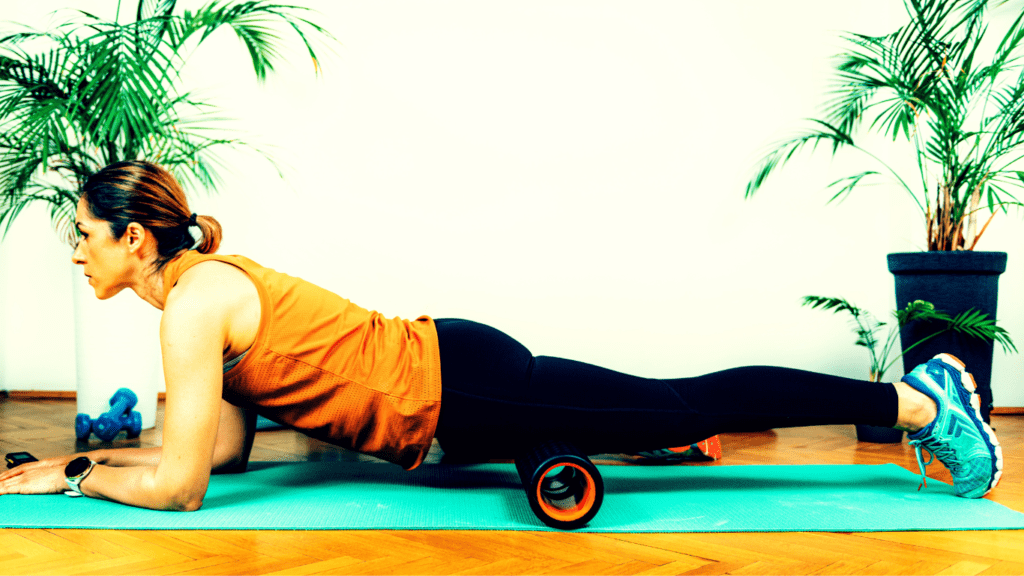
Foam Rolling Exercises for Weight Loss
Targeted Exercises: Incorporate these foam rolling exercises into your routine to maximize their weight loss benefits:
- Quadriceps: Foam rolling the quadriceps helps to release tension in the front thigh muscles, which can become tight from activities like running or cycling. Start by lying facedown with the foam roller under your thighs. Support your body with your forearms and slowly roll from your hips to just above your knees. Focus on any tight spots by pausing and holding for a few seconds before moving on.
- Hamstrings: Tight hamstrings can limit your range of motion and contribute to lower back pain. Sit on the floor with the foam roller under your thighs and lean back, supporting your weight with your hands behind you. Roll from the base of your glutes to just above your knees, adjusting your position to target different areas of your hamstrings.
- Calves: Foam rolling the calves can help alleviate tightness and improve ankle mobility, which is crucial for various lower body exercises. Sit on the floor with your legs extended and place the foam roller under your calves. Lift your hips off the ground and use your hands to roll from your ankles to just below your knees. Adjust pressure by shifting more weight onto the foam roller for a deeper massage.
- Back: Foam rolling the upper back can relieve tension and improve posture, which can indirectly support weight loss efforts by enhancing overall movement efficiency. Lie on your back with the foam roller under your upper back. Support your head with your hands and gently roll from your mid-back to your upper shoulders. Focus on breathing deeply to enhance relaxation and muscle release.
- IT Band: The iliotibial (IT) band runs along the outside of the thigh and can become tight from activities like running or cycling. Lie on your side with the foam roller under your outer thigh. Support your body with your forearm and roll from your hip to just above your knee. Use your opposite foot for stability and adjust the pressure by lifting or lowering your body weight.
Routine Samples: Incorporate these sample routines into your fitness regimen to experience the benefits of foam rolling for weight loss:
Beginner Routine:
- Warm-up: Perform 5 minutes of light cardio (e.g., walking or jogging in place).
- Foam Rolling Session: Spend 5-10 minutes foam rolling the quadriceps, hamstrings, calves, and back. Focus on gentle pressure and smooth movements to familiarize yourself with the technique.
- Stretching: Follow foam rolling with 5-10 minutes of static stretching to further enhance muscle relaxation and flexibility.
Intermediate Routine:
- Warm-up: Perform 10 minutes of moderate cardio (e.g., brisk walking or cycling).
- Foam Rolling Session: Spend 10-15 minutes foam rolling the quadriceps, hamstrings, calves, IT band, and upper back. Incorporate deeper pressure and longer holds on trigger points to release tension effectively.
- Strength Training: Complete a full-body strength training workout focusing on compound movements (e.g., squats, lunges, push-ups) to build muscle and burn calories.
- Cool-down: Finish with 5-10 minutes of gentle stretching and deep breathing to promote relaxation and recovery.
Advanced Routine:
- Warm-up: Perform 15 minutes of high-intensity cardio (e.g., running or jumping rope).
- Foam Rolling Session: Spend 15-20 minutes foam rolling all major muscle groups, including quadriceps, hamstrings, calves, IT band, upper back, and any additional areas of tightness or soreness. Utilize a combination of smooth and textured foam rollers for varying pressure.
- High-intensity Interval Training (HIIT): Complete a HIIT workout consisting of short bursts of intense exercise followed by periods of rest or low-intensity activity. HIIT is effective for calorie burning and improving cardiovascular fitness.
- Stretching and Recovery: Conclude with 10-15 minutes of dynamic stretching to maintain flexibility and promote muscle recovery. Focus on deep breathing and mindfulness to enhance relaxation.
Routine Examples Chart:
| Level | Warm-Up | Foam Rolling | Follow-Up |
|---|---|---|---|
| Beginner | 5 minutes light cardio | 5-10 minutes – Quadriceps, hamstrings, calves, back | 5-10 minutes stretching |
| Intermediate | 10 minutes moderate cardio | 10-15 minutes – Quadriceps, hamstrings, calves, IT band, upper back | Strength training + stretching |
| Advanced | 15 minutes high-intensity cardio | 15-20 minutes – All major muscle groups | HIIT workout + dynamic stretching |
Incorporating these foam rolling exercises and routines into your fitness plan can help you maximize the benefits of foam rolling for weight loss. Whether you’re new to foam rolling or a seasoned fitness enthusiast, adjusting the intensity and duration of your sessions can tailor the experience to meet your specific goals and preferences. Consistency is key to achieving lasting results, so make foam rolling a regular part of your fitness regimen to support overall health, mobility, and weight loss efforts effectively.
Addressing Common Concerns and Questions About Foam Rolling for Weight Loss
Foam rolling is a highly effective practice for improving muscle recovery, enhancing flexibility, and supporting weight loss goals. However, it’s essential to address common concerns and questions to ensure individuals can safely and effectively incorporate foam rolling into their fitness routines.
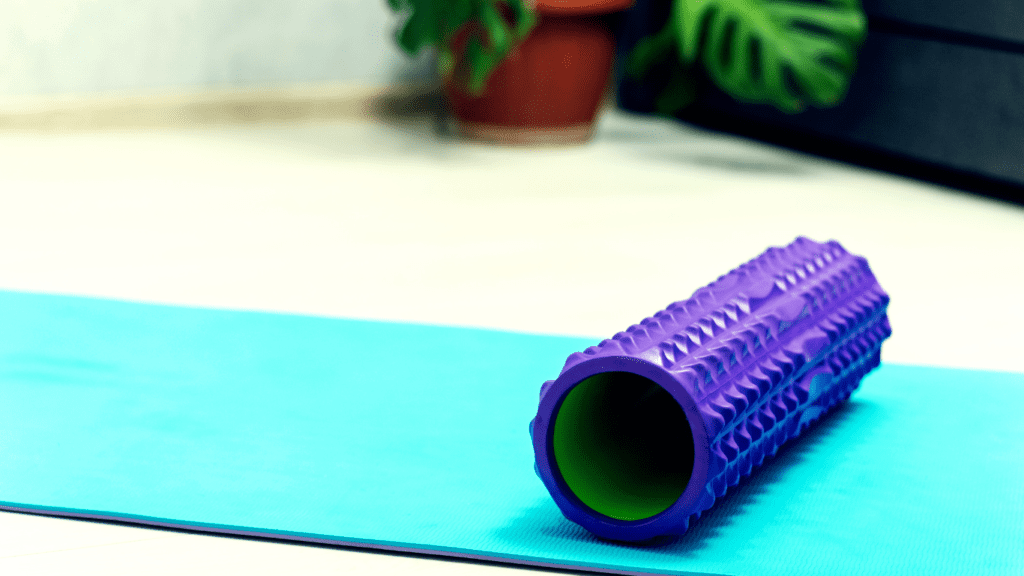
Pain and Discomfort: Understanding the sensations experienced during foam rolling is crucial for optimizing its benefits. While discomfort during foam rolling is normal and often indicative of releasing muscle tension, it’s essential to differentiate between productive discomfort and potentially harmful pain. Productive discomfort, such as a deep ache or pressure, typically diminishes as you continue rolling and can lead to improved muscle flexibility and reduced soreness. Conversely, sharp or acute pain, numbness, or tingling sensations may signal underlying issues and should prompt cessation of foam rolling in that area. Consulting a healthcare professional can provide guidance on managing discomfort and ensuring safe foam rolling practices.
Frequency: Determining how often to foam roll depends on individual factors such as fitness level, activity intensity, and recovery needs. For optimal results, aim to foam roll regularly, integrating sessions into your pre-workout warm-up or post-workout cool-down routines. Beginners may benefit from starting with 2-3 sessions per week, gradually increasing frequency as muscles adapt and become more responsive to foam rolling. Active individuals or those experiencing muscle tightness may find daily foam rolling sessions beneficial for maintaining muscle health and enhancing recovery between workouts.
Technique Refinement: Achieving effective foam rolling requires proper technique and form to maximize its therapeutic benefits. Begin by applying moderate pressure to targeted muscle groups, gradually increasing intensity as muscles relax and adapt to the roller. Roll slowly and evenly over each muscle group, focusing on areas of tightness or discomfort. Incorporate varied movements, such as rolling back and forth and holding on trigger points, to promote muscle release and improve circulation. Adjust body positioning and angle to access different muscle fibers effectively, ensuring comprehensive coverage and addressing specific areas of tension or soreness.
Mindful Application: Practicing mindfulness during foam rolling can enhance its efficacy and promote overall well-being. Engage in deep, controlled breathing throughout your foam rolling session to encourage relaxation and facilitate muscle release. Cultivate awareness of bodily sensations and responses, noting areas of improvement or persistent tension for future sessions. Embrace foam rolling as a holistic practice that integrates physical and mental benefits, fostering a deeper connection to your body and enhancing self-care practices.
Individual Adaptation: Recognize that foam rolling techniques and frequency may vary based on individual preferences and responses. Experiment with different foam roller densities and sizes to find the most comfortable and effective option for your needs. Customize foam rolling routines to target specific muscle groups or areas of concern, adapting sessions to complement other aspects of your fitness regimen. Prioritize consistency and gradual progression in foam rolling practices to optimize long-term benefits and support ongoing fitness and weight loss goals.
By addressing these common concerns and questions, individuals can approach foam rolling with confidence and incorporate it as a valuable tool for enhancing muscle recovery, promoting flexibility, and supporting weight loss efforts. Embrace foam rolling as a dynamic practice that evolves with your fitness journey, empowering you to achieve optimal results and maintain overall well-being through mindful application and personalized adaptation.
Common Concerns Chart:
| Issue | Description | Solution |
|---|---|---|
| Pain | – Discomfort is normal – Avoid sharp pain | – Consult a professional if pain persists |
| Frequency | – 2-3 times a week – Increase gradually | – Adjust based on muscle response |
| Technique | – Roll slowly and evenly – Focus on tension | – Refine technique for effective results |
Start Your Journey Today!
Let’s wrap up our journey through the benefits of foam rolling for weight loss with a motivational reflection on how this practice can truly elevate your fitness efforts.
Throughout this exploration, we’ve delved into the multifaceted advantages that foam rolling offers, from enhancing muscle recovery and flexibility to reducing muscle soreness and stress. It’s clear that foam rolling isn’t just a passing trend; it’s a powerful tool that can amplify your weight loss journey in profound ways.
Imagine starting your day with a few minutes of intentional foam rolling, gently waking up your muscles, increasing blood flow, and preparing your body for the challenges ahead. Visualize finishing a grueling workout and soothing your tired muscles with the rhythmic strokes of a foam roller, promoting faster recovery and minimizing the dreaded post-exercise stiffness.
The key to harnessing these benefits lies in consistency and mindfulness. By incorporating foam rolling into your daily or weekly routine, you’re not just investing in your physical health but also nurturing your mental well-being. It’s a practice that encourages you to tune into your body, listen to its cues, and respond with care.
As you embark on this journey, remember that every session counts. Whether you’re a beginner cautiously navigating your first foam rolling experiences or a seasoned enthusiast refining your technique, each roll brings you closer to your goals. Embrace the discomfort as a sign of progress, knowing that with each release of tension, your muscles become more resilient and responsive.
I encourage you to share your experiences with foam rolling. Whether you discover a new favorite technique or overcome a persistent muscle issue, your journey can inspire others on their path to wellness. Let’s build a community of support and knowledge-sharing, where questions are welcomed, experiences are celebrated, and together, we grow stronger.
For those eager to delve deeper into the world of foam rolling and weight loss, consider exploring additional resources. Dive into books that explore the science behind fascia release or articles that offer practical tips for optimizing your foam rolling sessions. Seek out expert opinions and studies that validate the benefits we’ve discussed, empowering yourself with knowledge to make informed decisions about your health and fitness practices.
In conclusion, remember that your journey towards weight loss and overall well-being is unique to you. Foam rolling is not just about physical improvement; it’s about fostering a deeper connection with your body and honoring its resilience. So, embrace the foam roller as your ally, your partner in progress, and let its gentle yet powerful touch guide you towards a healthier, more vibrant you.
Start today, with the confidence that each roll brings you closer to your goals. Share your victories, ask your questions, and let’s continue this conversation about the transformative benefits of foam rolling for weight loss. Together, we can roll our way towards a stronger, healthier future.
References and Further Reading
For those interested in exploring more about foam rolling and its benefits for weight loss, here are some recommended resources:
- Books:
- “The Roll Model: A Step-by-Step Guide to Erase Pain, Improve Mobility, and Live Better in Your Body” by Jill Miller
- “Becoming a Supple Leopard: The Ultimate Guide to Resolving Pain, Preventing Injury, and Optimizing Athletic Performance” by Dr. Kelly Starrett
- Articles:
- “The Benefits of Foam Rolling: Why You Should Roll Out Regularly” – Fitness Magazine
- “Foam Rolling: Applications for Exercise Performance and Rehabilitation” – Journal of Orthopaedic & Sports Physical Therapy
- Websites:
- National Academy of Sports Medicine (NASM) – Foam Rolling Techniques
- American Council on Exercise (ACE) – Foam Rolling Benefits and Techniques
These resources offer a wealth of information to deepen your understanding of foam rolling and support your journey towards improved fitness and weight loss. Happy rolling!

